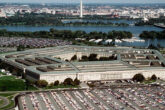November 22, 2016
Phases of War and the Iraq Experience
Applying the phasing construct to a quarter-century of U.S. military involvement in Iraq
The difficulties of applying the U.S. military’s phasing construct to the realities of conflict are rarely more evident than when examining the American experience in Iraq. Though U.S. involvement in Iraq has traditionally been divided into two distinct periods of conflict, the 1990–1991 Gulf War and the 2003–2011 Iraq War, the reality is that the U.S. military has been nearly continuously engaged in Iraq for the past 26 years. The United States has conducted special operations raids into, launched cruise missiles at, imposed no-fly zones over, and outright invaded Iraq. The United States also provided humanitarian aid, financially supported local actors, and even governed the country. The six-phase planning construct does a poor job of accurately representing the range of activities over a quarter-century of U.S. foreign policy and military strategy in Iraq.
The phasing construct is optimized for traditional conflict, and the continuous conflict in Iraq has been anything but. Operation Desert Storm is straightforward: Phase II (Seize Initiative) closely followed by Phase III (Dominate). The same was the case for the opening days of Operation Iraqi Freedom, when the United States toppled Saddam’s regime in just 21 days. Unsurprisingly, a phasing construct conceptually designed for sharp periods of conventional state-on-state conflict easily mapped onto those scenarios. It is much more difficult, however, to categorize other periods of the Iraq experience.
Read the full article at War on the Rocks
More from CNAS
-
The Department of Defense’s Breakthrough Nuclear Moment Risks Slipping Away
Unless they act, the Department of Defense’s breakthrough nuclear moment may vanish before it really happens....
By Will Rogers
-
DEFAERO Strategy Series [Apr 09, 25] CNAS' Becca Wasser and Phil Sheers on Revitalizing the U.S. Defense Industrial Base
On this episode of the Defense & Aerospace Report Strategy Series, sponsored by General Atomics Aeronautical Systems, Becca Wasser and Phil Sheers of the Center for a New Amer...
By Becca Wasser & Philip Sheers
-
From Production Lines to Front Lines
Executive Summary The U.S. defense industrial base (DIB) is struggling to meet the demands of the current strategic environment—let alone prepare for a potential conflict agai...
By Becca Wasser & Philip Sheers
-
The Pentagon’s Endangered Brain Trust
In this environment, sound assessments of emerging threats and new ideas to counter them will be especially vital....
By Dr. Andrew Krepinevich, Jr.




